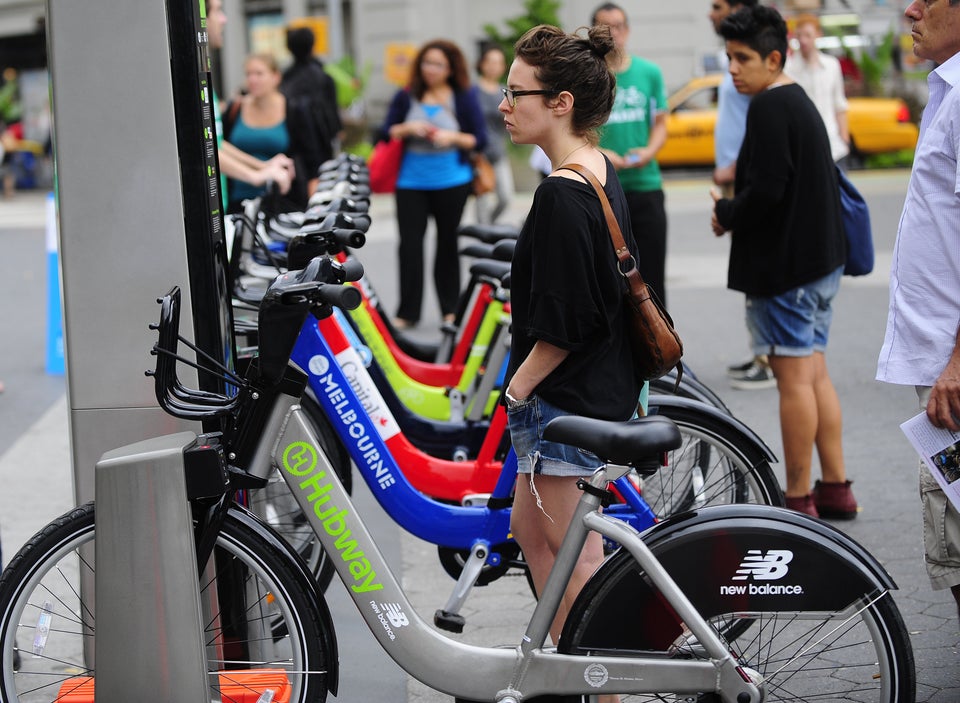
The New Forest National Park in England recently opened a Tech Creche, a service that allows children and adults to leave their cellphones and tablets behind, and instead immerse themselves in the sights, sounds and smells of nature. On the one hand, it sounds like a great way to combat tech addiction. With so many headlines warning of smartphones turning kids into zombies, and perhaps even increasing risky sexual behavior, the idea of forcing kids and adults alike to take a break from their screens seems like a perfectly healthy thing to do. That's especially true if it encourages them to appreciate nature more.
Some educators, researchers and activists, however, are pondering a different approach. Instead of forcing a choice between tech or nature, say these pragmatists, maybe we need to find the right combinations of tech and nature that can help kids get more immersed in their environment, and perhaps even inspire lifestyle changes to protect the world around them. (Even Sir David Attenborough is working on a virtual reality nature documentary.) That's the focus of a fascinating piece over at the Smithsonian Magazine that looks at the use of virtual and augmented reality as a way to modify attitudes and behaviors in a more sustainable direction. The concept is even winning over skeptics:
"I was initially not sold on the idea of augmented reality," said cognitive scientist Tina Grotzer, a professor in Harvard's graduate school of education and the co-principal investigator for both the EcoMUVE and EcoMobile projects. Grotzer spent several years as a teacher herself before heading to Harvard to research how kids learn, particularly how they learn science. Grotzer said it was the technology's potential to drive home environmental science lessons that won her over. "With physics, you can do an experiment, and kids can see instantly what you're talking about. With environmental science, we tried to do a decomposition experiment, but you set the experiment up and then 12 weeks later something happens. By then the kids have completely lost interest."
These ideas are of particular value when it comes to teaching about climate change, a problem of such scale and magnitude that it's hard for any of us to to grasp or act on in our daily lives. Humans, after all, have evolved to deal with what's in front of us — whether that's a predatory animal, the need to feed our families or find a mate. Our ancestors might have eventually learned to store food for the winter, and most of us have at least some good intentions to save for our retirement, but ask us to act on threats that seem distant and remote and it is hard to stay motivated — especially if everyone around us continues with life, business-as-usual.
virtual reality game changes attitudes about climateBy using virtual reality, researchers can immerse their subjects in seemingly realistic environments but tweak them to demonstrate and make tangible the impact of their actions. In one experiment detailed in the Smithsonian piece, for example, participants are asked to chop down trees in a pristine forest with a chainsaw. Researchers then follow how the experience impacts their paper use:
When she leaves this forest, and re-enters the "real" world, her paper consumption will drop by 20 percent and she will show a measurable preference for recycled paper products. Those effects will continue into the next few weeks and researchers hypothesize it will be a fairly permanent shift. By comparison, students who watch a video about deforestation or read an article on the subject will show heightened awareness of paper waste through that day — but they will return to their baseline behavior by the end of the week.
Other programs and platforms being developed include an MIT-designed game called Time Lapse 2100 which allow students to set policy parameters effecting the environment, and then watch how those decisions impact the environment over the course of a century. Another, developed by Stanford, allows students to actually "be" a piece of coral in the ocean and watch as the devastating impacts of ocean acidification unfold around them.
Whether or not virtual and augmented reality applications can help change human behavior remains to be seen. It's worth noting, however, that almost anything is worth a try at this point. Environmentalists have been preaching the same reduce, reuse, recycle mantras for the last 40 years, accompanied by worthy videos and speeches about the destruction we have wrought. The result, depressingly enough, has been ever-rising greenhouse gas emissions and a refusal in many circles to even accept the basic science of climate change.
Time to try something different. Pass the sci-fi goggles.
